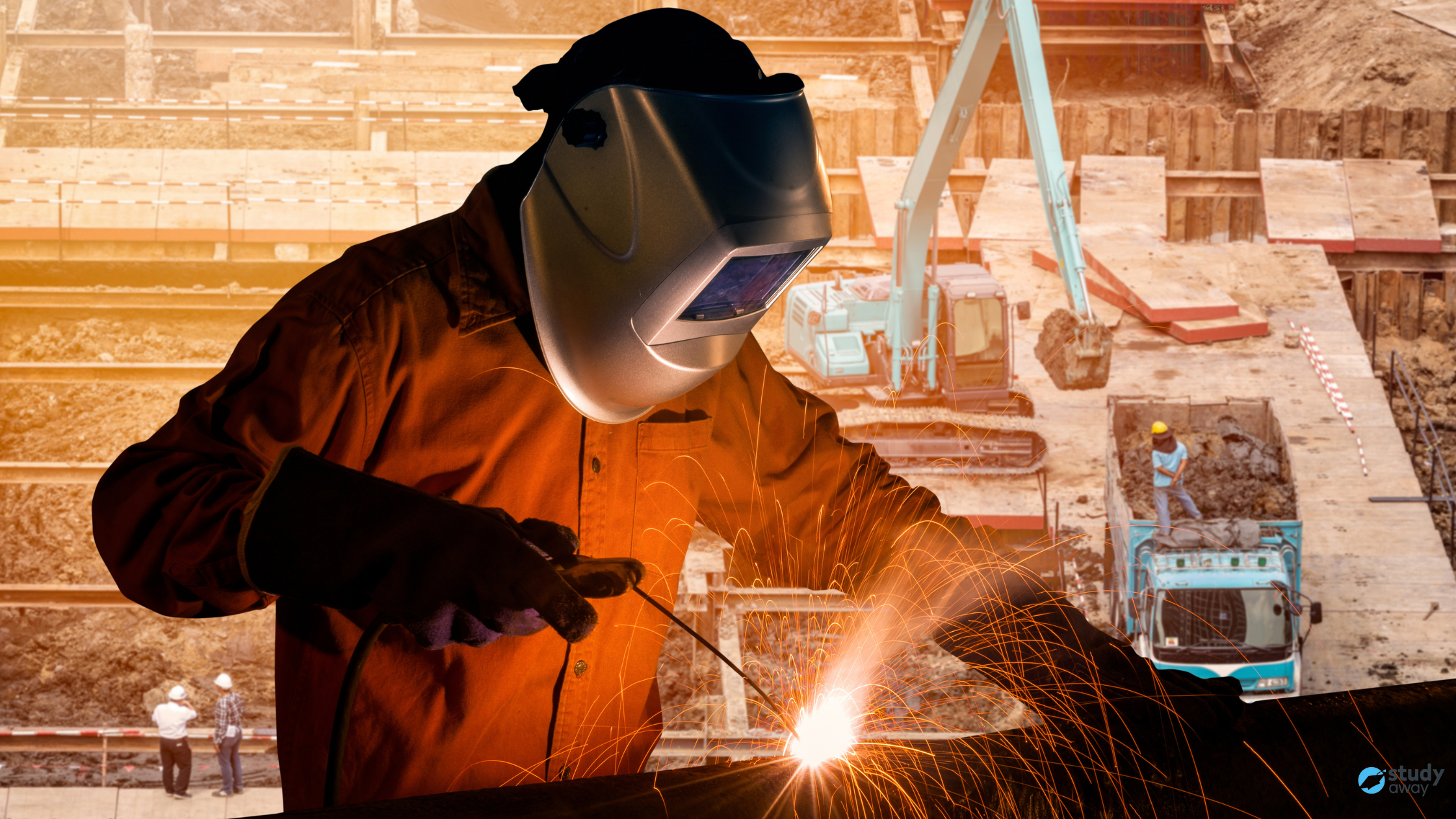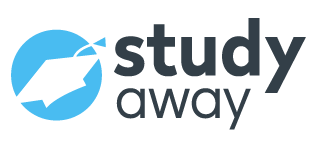
Welding is vital in the construction, manufacturing, renewable energy, and mining industries. Australia offers excellent welding skills and certification opportunities, with increasing demand for welders. Welding courses in Australia provide practical training, career advancement, and pathways to long-term employment.
This blog will address key questions about welding courses, their significance, career opportunities, and insights for international students.
Why Welding Matters: Is There a Great Need for Welders in Australia?
Welding is crucial in industries that build and maintain infrastructure like roads and machinery. With Australia's infrastructure and renewable energy investment, the demand for skilled welders remains high, especially in the mining, manufacturing, and energy sectors. The National Skills Commission highlights a skills shortage in welding, particularly in regional areas, making it a stable career choice. Reference: Job and Skills Austalia - Occupation Shortage List
Factors to Consider Welding Course
Australia offers world-class vocational training, and welding is no exception. A nationally recognised welding qualification opens doors to diverse industries, including:
- Construction (bridges, buildings, pipelines)
- Manufacturing (automotive, shipbuilding, aerospace)
- Mining and resources
- Oil and gas
The demand for skilled welders in Australia is strong, leading to good job opportunities and competitive salaries. This demand is reflected in resources like the Australian Government's labour market insights website,
Job Outlook, which provides information about current and future job trends.
Course Package and Fees to Become a Welder
What Qualifications Should You Study?
The Welding Program consists of two nationally recognised qualifications that must be completed over two years and nine months of study.
- Certificate IV in Engineering
- Diploma of Engineering - Advanced Trade
The qualifications that should be included in the package are listed below:
Certificate IV in Engineering—This qualification outlines the skills and knowledge needed for higher engineering tradespersons in metal, engineering, manufacturing, and related industries. It covers various engineering fields, including refrigeration, CNC programming, fluid power, heavy fabrication, maintenance, marine electronics, mechatronics, robotics, and welding.
- Duration: It takes 2 years to complete
Diploma of Engineering - Advanced Trade - This qualification equips individuals with the skills and knowledge for employment as an Advanced Engineering Tradesperson – Level II in metal, engineering, manufacturing, and related industries. It is designed for apprentices pursuing higher-level studies during their training or for existing engineering tradespersons.
- Duration: It takes 2 years to complete
View our course page: Study Engineering (Welding & Fabrication)
Higher Education Opportunities
- MEM50222 Diploma of Engineering – Technical
- MEM60122 Advanced Diploma of Engineering
How Much Does it Cost to Study Welding in Australia?
The cost of these two qualifications can differ based on the type of qualification, the training provider, and where you study in Australia. Studying in major cities usually costs more than in smaller cities or regional areas. As a rough estimate, these qualifications range from $29,000 to $35,000.
View our course page: Study Engineering (Welding & Fabrication)
Entry Requirements for International Students Studying Welding in Australia
Entry into welding & fabrication is challenging as the initial course is an Advanced Diploma and inaccessible to most people. Entry requirements are listed below. However, opportunities for those with relevant work experience also exist.
1. Course Requirements (refer to the course package above)
-
Must be 18 years of age or older
- Secondary School Year 12 (pass) transcripts
- English Language Proficiency - IELTS (5.5 to 6.0), TOEFL, PTE Academic
2. Student Visa (subclass 500)Visa Requirements
- Provide evidence of enrollment in an RTO offering the required course packaged for Welding & Fabrication.
- Genuine Temporary Entrant (GTE) Requirement: Evidence of financial capacity to support your stay in Australia (tuition, living expenses).
- You must not have a history of visa refusals or overstays in Australia or other countries.
- Overseas Student Health Cover (OSHC) is mandatory for all international students.
Welding Job Prospects
Graduates can find employment in the following roles by completing the Welding package:
Welder / Metal Fabricator - Join metals using welding equipment and techniques.
- With an average annual salary of $75,000 to $80,000.
Maintenance Technician - Perform maintenance and repairs on equipment, tools and machinery.
- With an average annual salary of $85,000 to $105,000
Career Progression Opportunities
Graduates from the program can pursue further study in an Advanced Diploma program, which may open up pathways to the following roles:
- Maintenance Engineer - Ensuring all equipment and processes operate smoothly, including machinery, lighting, heating, cooling systems, elevators, and escalators. Identify and address potential problems before failures occur.
- Mechanical Design Engineer - Design and develop mechanical components and systems.
- Mechatronics Engineer - Design and develop autonomous machines and systems that process information.
Challenges and Rewards of Studying Welding & Fabrication in Australia
Studying Welding & Fabrication in Australia presents unique opportunities and challenges. Here is a breakdown of the strengths and weaknesses to guide your decision-making.
Rewards
- High Demand and Job Security: Australia's construction, manufacturing, and resource sectors constantly need skilled welders and fabricators, and they offer excellent job prospects and career stability.
- Competitive Salaries: Welders and fabricators in Australia earn competitive wages, often with opportunities for overtime and specialised roles that pay even more.
- Practical, Hands-on Skills: Welding and fabrication courses focus on practical skills, preparing you for real-world tasks from day one.
- Nationally Recognised Qualifications: Australian welding qualifications are highly regarded domestically and internationally, enhancing employability.
- Diverse Career Paths: You can specialise in different welding types (underwater, aerospace, pipeline), pursue supervisory or inspection roles, or start your own business.
- World-Class Training Facilities: Australia boasts modern training facilities and experienced instructors, ensuring you receive a high-quality education.
- Pathway to Permanent Residency: Due to the skills shortage in this field, a welding qualification can help international students gain permanent residency in Australia.
Challenges
- Physically Demanding: Welding and fabrication can be physically demanding, involving long-standing, heavy lifting, and various working positions.
- Potential Health Hazards: Welders face risks from fumes, sparks, and loud noises. However, proper safety measures and equipment can help reduce these risks.
- Requires Precision and Attention to Detail: Welding demands a high level of accuracy and attention to detail, as even minor errors can compromise the integrity of a structure.
- Initial Investment: Studying in Australia entails tuition fees, living costs, and visa expenses, representing a substantial investment. Despite the high demand for welders, you'll need to showcase your skills and experience to stand out among qualified candidates.
- May Involve Shift Work or Remote Locations: Some welding jobs, particularly in mining or construction, may require you to work shifts or in remote locations.
Studying for a Welding & Fabrication in Australia can lead to a rewarding and fulfilling career. Thorough research and careful planning are key to your success!
Post-Study Visas for Welding & Fabrication Graduates
The great news is that there have always been stable pathways for welding & fabrication graduates to stay in Australia. However, you must work as a “Welder” and undergo a skills assessment to possess adequate skills and knowledge of the following:
- studying blueprints, drawings and specifications to determine job requirements
- selecting, cleaning and preparing metal stock
- cutting marked-out metal sections and shapes using hand tools, flame-cutting torches and metal-cutting machines
- shaping and bending metal sections and pipes using hand and machine tools and by heating and hammering
- aligning parts to be joined using hand tools and measuring instruments
- joining metal sections using various welding techniques, bolting and riveting
- examining welds for width of bead, penetration and precision
- finishing products by cleaning, polishing, filing and bathing in acidic solutions
- cleaning and smoothing welds by filing, chiselling and grinding
Trades Recognition Authority is the skills assessment body that verifies the standing of those skills for all visa purposes
Here are the common visa pathways that Welder graduates can pursue.
1. Temporary Graduate Visa (subclass 485):
- Stay in Australia for 18 months.
- Travel, work or study during your stay in Australia
- Include members of your family
- Become eligible for skilled visas and pathways to permanent residency
To be eligible for this visa, you MUST be:
- be 35 years of age or under when you apply. *Exceptions apply
- be in Australia when you apply for this visa
- hold an eligible visa or have held a Student visa in the last 6 months
- qualify relevant to an occupation on the skilled occupation list
- have applied for a skills assessment in your nominated occupation on the skilled occupation list
- provide evidence of adequate health insurance for all applicants when you apply
- provide evidence you have applied for an Australian Federal Police check when you apply.
- provide evidence of the required level of English with your application.
2. Skills in Demand visa (subclass 482) – Core Skills Stream
The visa includes the Core Skills Stream, Specialist Skill Stream, and Labour Agreement Stream. With this visa, you can:
- work in Australia for up to 4 years
- travel to and from Australia as many times as you want while the visa is valid
- if eligible, apply for permanent residence
To be eligible for this visa, you MUST be:
- be nominated to work in an occupation on the Core Skills Occupation List (CSOL)
- have at least 1 year of relevant work (full-time or 2 years part-time) experience in your nominated occupation or a related field
- have a relevant skills assessment
- work only for your sponsor or associated entity
- meet minimum standards of English language proficiency
Those who successfully acquire further stay visas can be eligible for Skilled Migration. This allows for Permanent Stay in Australia through the following visas:
Skilled Independent (subclass 189)
- workers with skills can live and work permanently anywhere in Australia
- You don’t need sponsors or nominators
- MUST be invited to apply
- MUST be under 45 years of age
Skilled Nominated (subclass 190)
- You must be nominated by the state or territory
- Must live and work in the nominating state or territory for at least two years
- Study, work, and stay in Australia permanently
- enrol in Australia's public health care scheme, Medicare
- sponsor your relatives to come to Australia
- travel to and from Australia for 5 years
- if eligible, become an Australian citizen
Check specific requirements on the Department of Home Affairs website. This page provides the latest details and eligibility criteria for all relevant visas.
Studyaway is your partner throughout your stay in Australia, and we will guide you every step of the way, from student visas to graduate, work, and permanent residency, through our team of experts.
Start Your Welding Journey with Studyaway!
Studying Welding & Fabrication in Australia offers strong job prospects and the opportunity to make a real difference.
At Studyaway, we provide expert support to help you choose the right course, manage visa options, and navigate your career path. With our affordable packages, we can make your dream of studying in Australia a reality.
Here is some further reading to support you
- Choosing the Right Course to Study in Australia: A Guide for International Students
- Navigate to our course page, Study Engineering (Welding & Fabrication)
- Top Course to Study in Australia
- Student Visa Requirements




